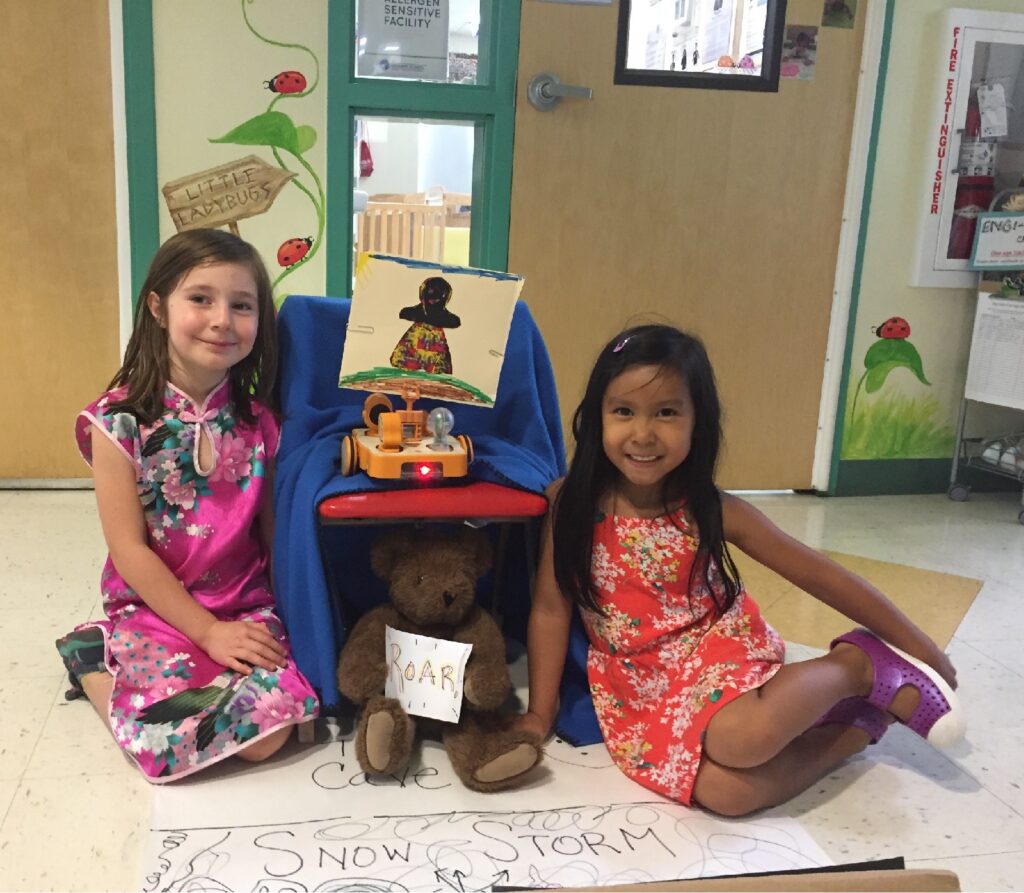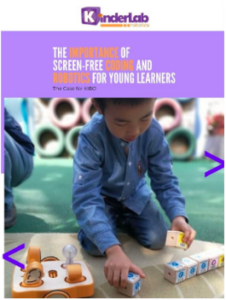Teaching Coding to Elementary Students through Art, Science, and Storytelling!
Teaching coding to elementary students can come with challenges as the language of code is abstract. When teaching code to young children, the focus has to be anchoring the simplest ideas behind the abstract language of code to basic concepts they can recognize and understand. Storytelling is one of the most powerful tools that helps young learners make connections between the abstract and the concrete, and the basics of code. Through stories, broad ideas about cause and effect and sequencing are communicated in an engaging, age-appropriate way.  The movement to evolve STEM (science, technology, engineering, and mathematics) into STEAM, working the arts into the world of science and tech, is evident in schools. It’s become clear to educators that the real-world applications of abstract, “left-brained” disciplines often are best illustrated by the arts. Teaching coding alongside the arts helps to ground the abstract language of code to real world effects.
The movement to evolve STEM (science, technology, engineering, and mathematics) into STEAM, working the arts into the world of science and tech, is evident in schools. It’s become clear to educators that the real-world applications of abstract, “left-brained” disciplines often are best illustrated by the arts. Teaching coding alongside the arts helps to ground the abstract language of code to real world effects.
Webinar – Storytelling with KIBO: Meeting Early Literacy Milestones with Robotics
Watch the “Storytelling with KIBO: Meeting Early Literacy Milestones with Robotics” webinar recording, where STEAM leaders share research, experiences and examples of how KIBO provides literacy education through robotics, coding, and STEAM!
Teaching Coding to Elementary Students Through Storytelling
So how does coding and storytelling fit together? For young children, it begins with KIBO, a screen-free robot that children code and bring to life by putting together a sequence of programmable wooden building blocks. The hands-on KIBO robot teaches young learners the simplest elements of coding, including: sequential commands, basic “if/then” statements, and using sensors. Establishing a knowledge base is one thing, but the ultimate goal is for kids to use that knowledge to solve problems, develop their computational thinkng, and evaluate and engage in new contepts. This is where storytelling becomes a compelling door into continued coding practice and engaging with the skills that they have developed.
Reenacting a Journey Through Code
A perfect example of incorporating coding and robotics in early learning is to retell a story about a journey.
- Have students engage in a decomposition of the text. In this example, kids interpret different movements and evaluate language like “over the river and through the woods.”
- Students then extrapolate these narrative elements into code for KIBO to reenact. They turn the narrative into step by step commands with the wooden programmable building blocls.
- Early learners then expand on the narrative using their creativity where they create an environment for the robot to navigate with landmarks to pass and obstacles to sidestep. The act of building an environment for the robot to navigate through teaches spatial awareness and challenging students to correlate their code with steps from start to finish.
- Lastly, KIBO comes with art platforms on which young students transform their robot character by creating and designing characters to place on their robot. They add personality to help bring their story’s protagonist to life.
Through the simple merging of two seemingly disparate disciplines, early learners apply these new abstract skills to create real life recreations of their favorite stories. By retelling stories, teaching coding to elementary students is reinforced by merging these disparate skills in a single exercise, incorporating the student’s creativity to further spark ideas and interest in future projects.
STEAM is the cornerstone of so many future industries and teaching coding to elementary students brings creative problem soliving, computational thinking, sequential though, and so much more for our young learners. Bring KIBO to your young learners to not only learn how to code, but to spark their creativity at the same time.
Meet KIBO, a Screen-free Educational STEAM Robot Specifically Designed for Teaching Coding to Elementary Students
KIBO, the STEAM learning robot designed specifically for teaching coding to elementary students, offers an inviting, engaging platform for young children to start their journey into creating with code in a fun and creative way. KIBO’s block-based coding language gives children control over the robot’s movements, sounds, and sensors, allowing them to express their imaginations with code. The KIBO curriculum for educators also teaches children to tell stories, create characters, and explore the world around them through code. KIBO is the number one choice in screen-free coding for kids – trusted by more parents and schools to introduce today’s youth to the wonders of technology and robotics.
Learn more about why KIBO is so different – and so important – for your young learners, as it is designed to be extended with craft and other building materials, providing a platform for imaginative play, where children develop their computational thinking, and the engineering design process.
KIBO pulls together constructive play, problem solving, critical thinking, hands-on learning, and more!
Learn the 6 Key Benefits of Using Robotics with Your Youngest Students!
![]() Introduce coding and robotics into your early childhood classrooms – in a fun and playful way!
Introduce coding and robotics into your early childhood classrooms – in a fun and playful way!



















